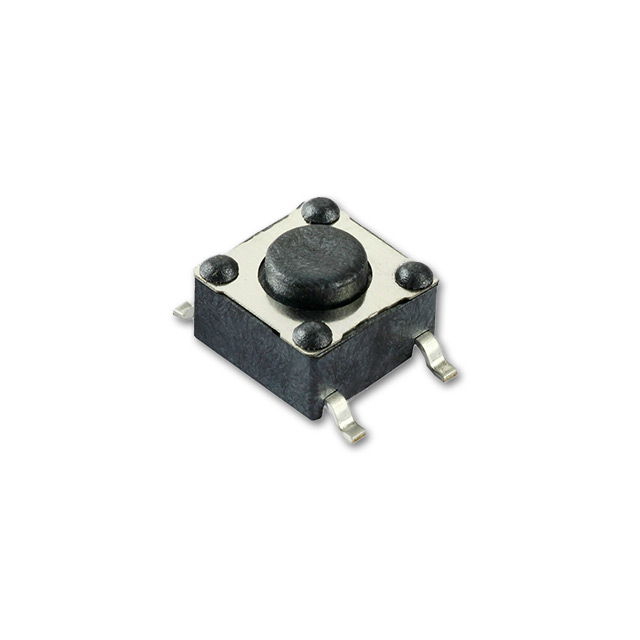The market offers a variety of tactile switches with different feedback styles.
Understanding the Advantages of Tactile Switches for Boosted User Experience
Tactile switches are indispensable to modern user interfaces, offering physical comments that boosts interaction precision and customer satisfaction. By offering an unique experience upon activation, tactile switches validate user inputs without the demand to divert aesthetic attention, improving task implementation and lowering error prices.
Exploring the Mechanics of Tactile Switches
To recognize how responsive switches improve customer experience, it is necessary to look into their auto mechanics. Tactile switches operate with a mechanism that individuals can really feel and listen to when a secret is pressed. This is accomplished by including a small dome or bump within the button, which creates resistance at a details point in the keypress pathway. Once this factor is surpassed, the resistance offers method, creating a noticeable 'click.' This physical sensation is important as it supplies immediate physical feedback to the customer, confirming that the input has been made without needing to activate the button entirely.
The construction of these switches varies, however typical materials consist of metal for the calls and rubber or silicone for the responsive dome - tactile switches. These parts are engineered to stand up to countless cycles, making sure toughness and constant performance gradually. This reliability makes responsive buttons specifically preferred in environments that demand fast, specific individual input
Just How Tactile Responses Enhances Accuracy and Speed
Lots of users find that responsive comments from buttons substantially enhances both the accuracy and rate of their communications with devices. The distinctive physical sensation given when a responsive button is activated enables individuals to confirm their input without requiring to verify aesthetically. This confirmation is critical in settings where attention is split across several tasks, as it makes sure inputs are both deliberate and appropriate.
In addition, the prompt responses from responsive switches minimizes the moment taken between actions. Customers do not have to push keys multiple times to guarantee activation, resulting in quicker reaction times. This effectiveness is specifically helpful in high-speed typing situations where each millisecond can contribute to total productivity.

Furthermore, the boosted sensory experience reduces individual tiredness and increases engagement, making interactions extra instinctive and click site much less prone to mistakes - tactile switches. Hence, tactile switches not just enhance the capability of a device but likewise add to a more enjoyable customer experience
The Role of Tactile Changes in Video Gaming Efficiency

Furthermore, responsive buttons add to quicker reaction times. The physical sensation validates the crucial press without the requirement to bad the keys, making it possible for quicker inputs and a smoother gaming experience. This is especially beneficial in games that require quick and repetitive keystrokes, where speed is usually as vital as precision.

Responsive Switches in Professional Settings
Responsive switches are just as transformative in specialist settings, dig this where performance and ergonomic style boost efficiency. These buttons, commonly found in high-precision keyboards, are prized for their responsive feedback - tactile switches.
In setups like control areas or workshops, responsive buttons are incorporated into equipment for their trusted performance. They use operators the certainty needed in high-stakes settings, ensuring that every command or change is carried out as intended. This dependability, coupled with the responsive action, assists keep high levels of focus and operational efficiency, critical in preserving workflow and conference expert requirements.
Comparing Tactile and Non-Tactile Interface
Just how do tactile user interfaces compare to their non-tactile counterparts? Tactile user interfaces, such as those with physical switches or distinctive surface areas, use prompt physical responses via touch.
The choice between tactile and non-tactile interfaces typically relies on the application's context and user needs. Responsive user interfaces are indispensable in circumstances calling for operation without direct line of sight, such as driving or in specific industrial setups. Conversely, non-tactile interfaces can be premium in clean or clean and sterile atmospheres where physical buttons may harbor pollutants. Each type has its strengths, and the optimal choice enhances user interaction, guaranteeing effectiveness and performance in user experience.

Verdict
In final thought, responsive switches check substantially enhance individual experiences by offering vital physical comments. By providing an extra instinctive and satisfying communication, tactile buttons verify premium to non-tactile user interfaces, making them a preferred choice for users looking for integrity and efficiency in their communications with modern technology.